|
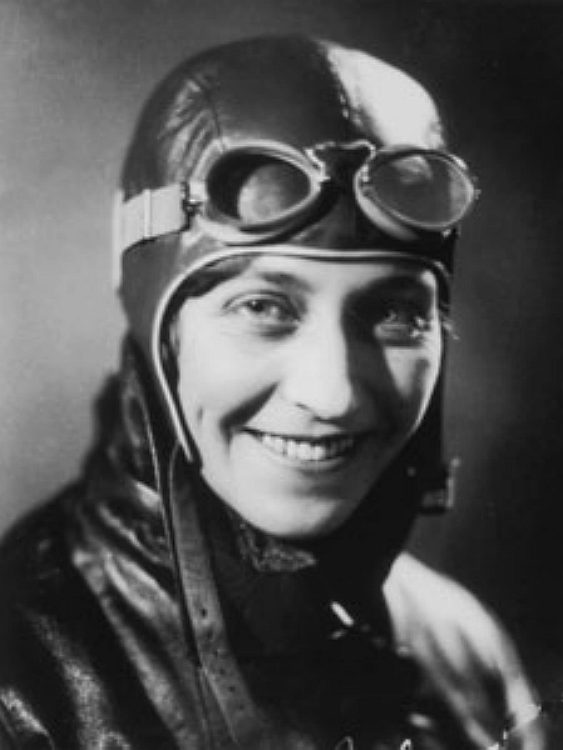
Amy Johnson
Amy Johnson
CBE, was a pioneering English aviator. Flying solo or with her husband, Jim Mollison, Johnson set numerous long-distance records during the 1930s. Johnson flew in the Second World War as a part of the Air Transport Auxiliary where she died during a ferry flight.
BACKGROUND
Johnson was born in Kingston upon Hull, East Riding of Yorkshire, and was educated at Boulevard Municipal Secondary School (later Kingston High School). and the
University of Sheffield, where she graduated with a Bachelor of Arts degree in economics.
When she was eighteen she began a relationship with a Swiss businessman, Hans Arregger, who was living in Hull. Amy had hoped they would marry, but the relationship broke down and Hans married another woman, but he kept Amy’s letters for the rest of his life (they are now held at the Hull History Centre).
She then worked in London as secretary to the solicitor, William Charles Crocker. She was introduced to flying as a hobby, gaining a pilot's "A" Licence, No. 1979 on 6 July 1929 at the London Aeroplane Club under the tutelage of Captain Valentine Baker. In that same year, she became the first British woman to obtain a ground engineer's "C" licence.
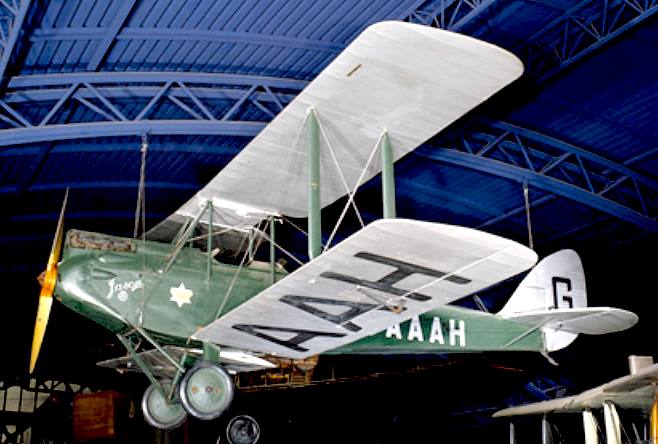
In 1930, English aviator Amy Johnson (1903-1941) piloted Jason I to become the first woman to fly solo from Great Britain to Australia, flying from Croydon in Greater London, to Darwin in the Northern Territory. The Gipsy Moth contributed to the growth of private and sport flying between the two world wars, and was used for many great aviation feats. About 1000 were built by the de Havilland company at
Edgware, Greater London
AVIATOR
Johnson's father, always one of her strongest supporters, offered to help her buy an aircraft. With
£600 shared funds from her father and Lord Wakefield she purchased G-AAAH, a second-hand de Havilland DH.60 Gipsy Moth she named "Jason", not after the voyager of Greek legend, but after her father's business trade mark.
Johnson achieved worldwide recognition when, in 1930, she became the first woman pilot, or in the language of the time, "aviatrix", to fly solo from England to Australia. Flying G-AAAH, a Gipsy Moth which was the first of her aircraft named
"Jason" after the business trademark, she left Croydon, south of London, on 5 May of that year and landed in Darwin, Northern Territory, on 24 May after flying 11,000 miles (18,000 km). Her aircraft for this flight can still be seen in the
Science Museum in London. She received the Harmon Trophy as well as a CBE in recognition of this achievement, and was also honoured with the No. 1 civil pilot's licence under Australia's 1921 Air Navigation Regulations.
Early in 1930, she set her objective to fly solo to Australia and to beat Bert Hinkler's record of 16 days.
In July 1931, Johnson and her co-pilot Jack Humphreys, became the first pilots to fly from London to
Moscow in one day, completing the 1,760 miles (2,830 km) journey in approximately 21 hours. From there, they continued across Siberia and on to Tokyo, setting a record time for flying from Britain to
Japan. The flight was completed in G-AAZV de Havilland DH.80 Puss Moth, named "Jason II".
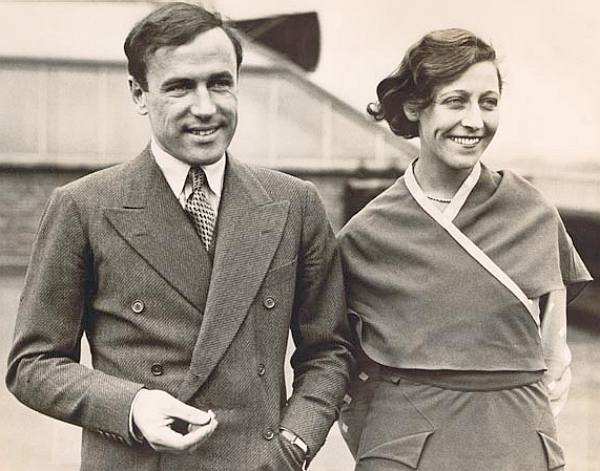
On 29 July 1932, Amy Johnson and Jim Mollison married
In 1932, Johnson married Scottish pilot Jim Mollison, who had, during a flight together, proposed to her only eight hours after they had met.
In July 1932, Johnson set a solo record for the flight from London to Cape Town, South Africa in a Puss Moth, "G-ACAB", named Desert Cloud, breaking her new husband's record. Her next flights were as a duo, flying with Mollison, she flew G-ACCV, named "Seafarer," a de Havilland DH.84 Dragon I nonstop from Pendine Sands, South Wales, to the
United States in 1933. However, their aircraft ran out of fuel and crash-landed in Bridgeport, Connecticut; both were injured. After recuperating, the pair were feted by New York society and received a ticker tape parade down Wall Street.
The Mollisons also flew in record time from Britain to India in 1934 in G-ACSP, named "Black Magic", a de Havilland DH.88 Comet as part of the Britain to Australia MacRobertson Air Race. They were forced to retire from the race at Allahabad because of engine trouble.
1936 - In May 1936, Johnson made her last record-breaking flight, regaining her Britain to
South Africa record in G-ADZO, a Percival Gull Six.
1938 - In 1938, Johnson overturned her glider when landing after a display at Walsall Aerodrome in England, but was not seriously hurt. The same year, she
divorced Mollison. Soon afterwards, she reverted to her maiden name.
1939 - WORLD WAR TWO
1940 - In 1940, during the Second World War, Johnson joined the newly formed Air Transport Auxiliary (ATA), whose job was to transport Royal Air Force aircraft around the country – and rose to First Officer. (Her ex-husband Jim Mollison also flew for the ATA throughout the war.)
1941 - ACCIDENT
On 5 January 1941, while flying an Airspeed Oxford for the ATA from Blackpool to
RAF Kidlington near Oxford, Johnson went off course in adverse weather conditions. Reportedly out of fuel, she bailed out as her aircraft crashed into the Thames Estuary.
The crew of the HMS Haslemere spotted Johnson's parachute coming down and saw her alive in the water. Conditions were poor – there was a heavy sea and a strong tide, snow was falling and it was intensely cold. Lt Cmdr Walter Fletcher, the commander of Haslemere, dived into the water in an attempt to rescue Johnson. However, he died in the attempt. Johnson
died and her body was never recovered.
A memorial service was held for Johnson in the church of St. Martin in the Fields on 14 January 1941. Walter Fletcher was posthumously awarded the Albert Medal in May 1941.
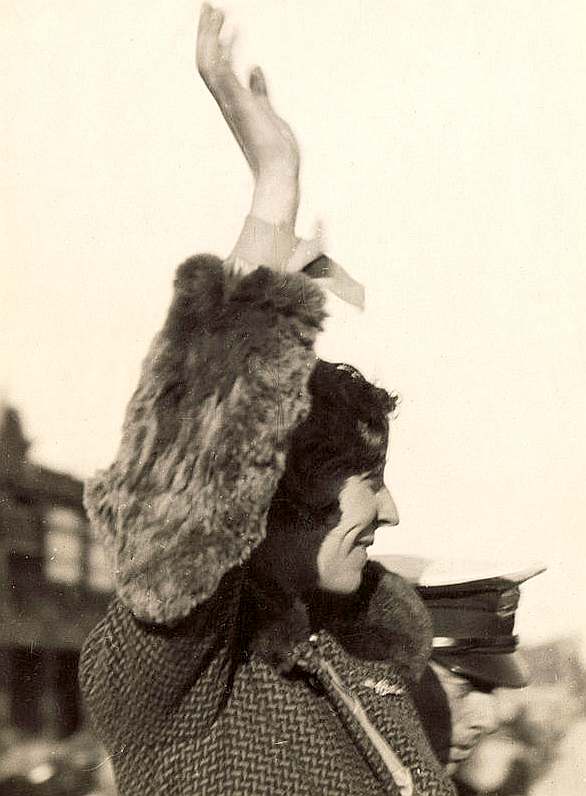
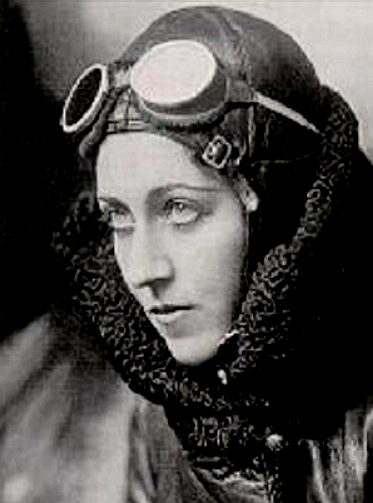
LEFT:
Amy waving to an Australian crowd, and RIGHT: in her trademark helmet and
goggles. Amy was very small and lightly built, all the more remarkable her
incredible fortitude.
MYSTERIOUS CIRCUMSTANCES
There is still some mystery about the accident, as the exact reason for the flight is still a government secret and there is some evidence that besides Johnson and Fletcher a third person (possibly someone she was supposed to ferry somewhere) was also seen in the water and also died. Who the third party was is still unknown. Johnson was the first member of the Air Transport Auxiliary to die in service. Her death in an Oxford aircraft was ironic, as she had been one of the original subscribers to the share offer for Airspeed.
However, in 1999 it was reported that Tom Mitchell, from Crowborough, Sussex, claimed to have shot the heroine down when she twice failed to give the correct identification code during the flight. He said: "The reason Amy was shot down was because she gave the wrong colour of the day [a signal to identify aircraft known by all British forces] over radio." Mr. Mitchell explained how the aircraft was sighted and contacted by
radio. A request was made for the signal. She gave the wrong one twice. "Sixteen rounds of shells were fired and the plane dived into the Thames Estuary. We all thought it was an enemy plane until the next day when we read the papers and discovered it was Amy. The officers told us never to tell anyone what happened."
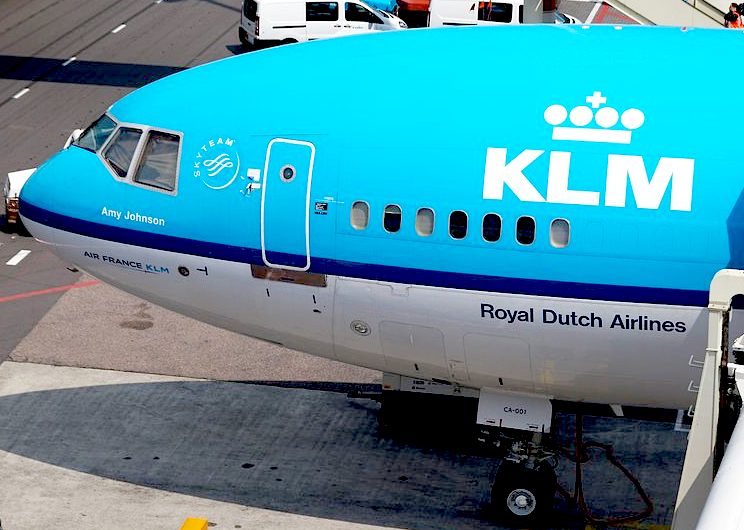
Tributes to
Amy Johnson include a KLM McDonnell-Douglas MD-11 named in her honor and "Amy's Restaurant and Bar" at the
Hilton Stansted
Hotel, London, named after her.
TRIBUTES
During her life, Johnson was recognised in many ways. In June 1930, Johnson's flight to Australia was the subject of a contemporary popular song, "Amy, Wonderful Amy", composed by Horatio Nicholls and recorded by Harry Bidgood, Jack Hylton, Arthur Lally, Arthur Rosebery and Debroy Somers. She was also the guest of honour at the opening of the first Butlins holiday camp, in Skegness in 1936. From 1935 to 1937, Johnson was the President of the Women's Engineering Society.
A collection of Amy Johnson souvenirs and mementos was donated by her father to Sewerby Hall in 1958. The hall now houses a room dedicated to Amy Johnson in its museum. In 1974, Harry Ibbetson's statue of Amy Johnson was unveiled in Prospect Street, Hull where a girls' school was named after her (the school later closed in 2004). A blue plaque commemorates Johnson at Vernon Court, Hendon Way, in Cricklewood, London.
BUILDINGS NAMED IN AMY'S HONOR INCLUDE:
"Amy Johnson Building" housing the department of Automatic Control and Systems Engineering at the University of Sheffield.
"Amy Johnson Primary School" situated on Mollison Drive on the Roundshaw Estate, Wallington, Surrey, which is built on the former runway site of Croydon Airport.
"The Hawthornes @ Amy Johnson" in Hull, a major housing development by Keepmoat Homes on the site of the former Amy Johnson School.
STREETS NAMED IN AMY'S HONOR INCLUDE:
"Amy Johnson Avenue", a major arterial road in Darwin, Australia connecting Tiger Brennan Drive and the Stuart Highway to McMillan's Road
"Amy Johnson Avenue" in Bridlington, East Riding of Yorkshire
"Amy Johnson Way", close to Blackpool Airport, in Blackpool, Lancashire
"Amy Johnson Way" in the Rawcliffe area of York
"Johnson View" and "Mollison Rise" in Whiteley, Hampshire.
"Mollison Way" in Queensbury, London.
"Amy Johnson Place" in Eagle Farm Brisbane Australia where she landed in 1930
In 2011 the Royal Aeronautical Society established the annual Amy Johnson Named Lecture to celebrate a century of women in flight and to honour Britain's most famous woman aviator. Carolyn McCall, Chief Executive of EasyJet, delivered the Inaugural Lecture on 6 July 2011 at the Society's headquarters in London. The Lecture is held on or close to 6 July every year to mark the date in 1929 when Amy Johnson was awarded her pilot’s licence.
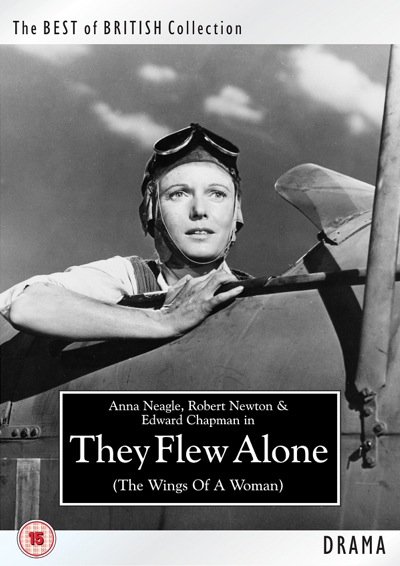
MOVIE
They Flew Alone (released in the US as Wings and the Woman) is a 1942 British biopic about aviator Amy Johnson, directed and produced by Herbert Wilcox and starring Anna Neagle, Robert Newton and Edward Chapman. It was distributed in the UK and the US by RKO Radio Pictures.
Synopsis
The film chronicled the life of Amy Johnson, the British pilot who had gained world attention in the 1930s for her exploits, among them two solo record flights from London to Cape Town in South Africa, and who had joined the Air Transport Auxiliary at the outbreak of the
Second World
War. It was intended to be both a film honouring Johnson, who had died in 1941 during a ferry flight of an Airspeed Oxford, and a propaganda call to arms at the height of the war years.
Cast
Anna Neagle as Amy Johnson
Robert Newton as Jim Mollison
Edward Chapman as Mr. Johnson
Nora Swinburne as ATA Commandant
Joan Kemp-Welch as Mrs. Johnson
Brefni O'Rorke as Mac
Charles Carson as Lord Wakefield
Martita Hunt as Miss Bland
Anthony Shaw as Official
Eliot Makeham as Mayor of Croydon
David Horne as Solicitor
Miles Malleson as Vacuum Salesman
Aubrey Mallalieu as Bill, the Barber
Charles Victor as Postmaster
Hay Petrie as Old General
John Slater as Officer on Interview Panel
Percy Parsons as Man
Cyril Smith as Radio Operator On 'Aquitania'
George Merritt as Reporter
Muriel George as Kitty, the Housekeeper
Ian Fleming as Secretary
William Hartnell as Scotty
Arthur Hambling as Policeman
Peter Gawthorne as RAF Officer
Ronald Shiner as Stag Lane, the Mechanic
|
They
Flew Alone - Youtube
|
LINKS
History
UK Amy Johnson
Science
Museum Amy_Johnson
Hull
History Centre Amy Hohnson
Wikipedia
Amy_Johnson
Wikipedia
They_Flew_Alone
http://www.history.co.uk/biographies/amy-johnson
http://www.sciencemuseum.org.uk/onlinestuff/stories/amy_johnson.aspx
http://www.hullhistorycentre.org.uk/discover/hull_history_centre/our_collections/hull_people/amyjohnson.aspx
http://en.wikipedia.org/wiki/Amy_Johnson
http://en.wikipedia.org/wiki/They_Flew_Alone

An
event for environmentalists around the world in recognition that air
pollution can cause Cancer
|






